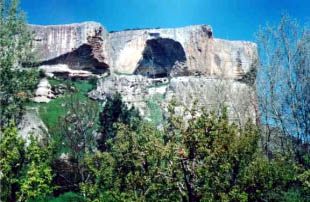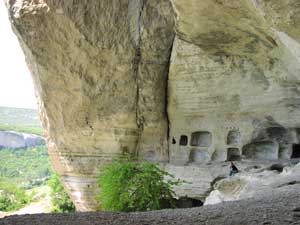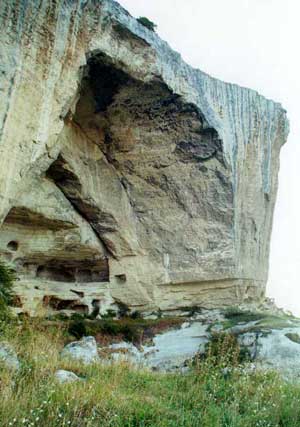
In Antiquity
In the Middle Ages
Near Outlying Areas
Far Outlying Areas
Mangup-Kale cave town
Eski-kermen
Chufut-Kale fortress
Tepe-Kermen site
Bakla cave town
Kyz-Kermen fortress
Kachi-Kal'on cave monastery
Chelter-Marmara monastery
Shuldan monastery
Kyz-Kule site
("the cross ship")
Late 6th or 7th to 18th century

If one looks at Kachi-Kal'on cliff from the highway below, one can easily imagine a ship sailing along the valley of Kacha river. In the upper part of the ship's prow, the pattern of natural fissures looks like an image of a big cross, which is the reason of this place name, Kachi-Kal'on, or literally "the cross ship". Some fortified settlement developed here in Early Middle Ages, and the Christian monastery originates from the 10th to 12th century.
| Lumps of limestone, which broke off the rock massif, are scattered through the steep slope at the footstep of the precipice. Some are as big as a two-story house, in some there were caves carved for wineries or storerooms. Sometimes caves were used for living. More than a hundred of wine presses are an evidence of the dwellers' main occupation. |  |
 |
The steeps of Kachi-Kal'on contain five natural grottos with artificial caves, located in several tiers and connected by staircases and passageways. The Fourth, or the Big grotto is of special interest and contains the so-called Anastasia spring. The monastery ceased to exist after the Christians were evacuated from the Crimea in 1778. In1850, St. Anastasia hermitage was established in Kachi-Kal'on, and the spring in the grotto became the place of pilgrimage. The monastery was closed down in 1921. |